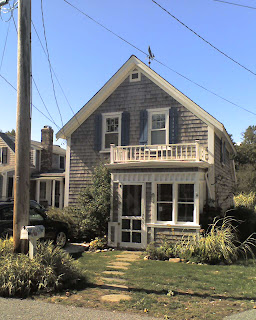As far as a follow-up post about my new smoker goes, I want to start out by saying thanks to my friend Chris, who actually did the bulk of the assembly of my new smoker. I would have gotten to this…but once he saw the job needed doing he was totally into it. Thanks bud!
One of the things about blogging is, you never know when a post is going to strike the chord and engage the readers to comment. I thought this might be the case with a post about bbq, like the one I put up yesterday about making brisket – and I was right. Once that post streamed over to Facebook, there was a nice dialog with comments and suggestions.
The first thing that came to mind as I started seeing the posts was a picture that I had in my head from Labor Day morning as Mary and I set out for breakfast. In the Kite Hollow area of Stanley, a fellow was sitting on the folded down tailgate of his F150, watching intently the barrel shaped smoker grill about 15 feet in front of him.
As we passed, I saw that he had just lit his coals, and was waiting for them to be ready – I guess this was about 9am. This whole thing is a bit like Thanksgiving in the end: the cooking is a big production, and in the end, however things turn out, the food is the centerpiece of a good time in the company of friends and family.
So now, let’s turn to some of the comments coming in.
From my friend Kelly, she mentioned an article about brisket that had appeared in the Washington Post recently. The dish wasn’t prepared as bbq, but the article is one of several that have come out recently about this cut of meat. Maybe it’s a change of season thing.
From Henry – the Labor Day ribs and chix photo that accompanies the post is his – he told me about how he likes using the trash can smoker he made. He sent a link, and this looks like an innovative, somewhat easy way to go if I take the next step with this and need a bigger set up. Actually a web search will yield a lot of interesting stuff about this cooking method, including tons of YouTube videos and other how-to’s…I have the spare mini-Weber I can adapt for this.
From Wes, there were some suggestions about technique and types of wood smoke to use:
“I recommend Mesquite wood for brisket, smoking it at 200-225 degrees about 1-1.5 hours per pound... low and slow will make the meat tender. Leave the fat on the top.. I cook it in a tin pan which will catch the drippings and keep the meat moist. I have used both marinades and dry rubs with good results. Try the BBQ Forum
http://www.thebbqforum.com/ for some great info and recipes.”
When I told him that I wanted to emphasize hickory, since it is growing on the property, he replied, “Hickory is great for pork, chicken and turkey. When you do the pork loin, try mixing the hickory with the apple and oak if you can get it. Put a good pork rub on it the night before and smoke it to 160 degrees...it will dry out if you get it much hotter. You can usually get a bag of Mesquite chunks at Home Depot or Walmart for about $5.”
Then by email last night, a note from Bill in Tampa, who’s going to be in town next week. He wrote, “…saw your blog entry that you are doing some barbecuing; we'll have to discuss this and talk technique next week. I got a Big Green Egg several years ago and have enjoyed it very much. I have done several briskets, I always have liked the flavor but wish it was a little less dry. I have white oak, red oak, hickory, pecan, orange tree and Jack Daniels barrels to smoke with and they all have such great flavor. It is very cool that you have access to hickory and apple trees.”
I should mention that we also have white oak on the property, too. I've got red oak in Alexandria - there are always branches and trunks coming down so it should be easy to come by. So I have apple, hickory, and red and white oak to work with. That makes a lot of opportunity to experiment with methods and flavors...Something to look forward to.

















































